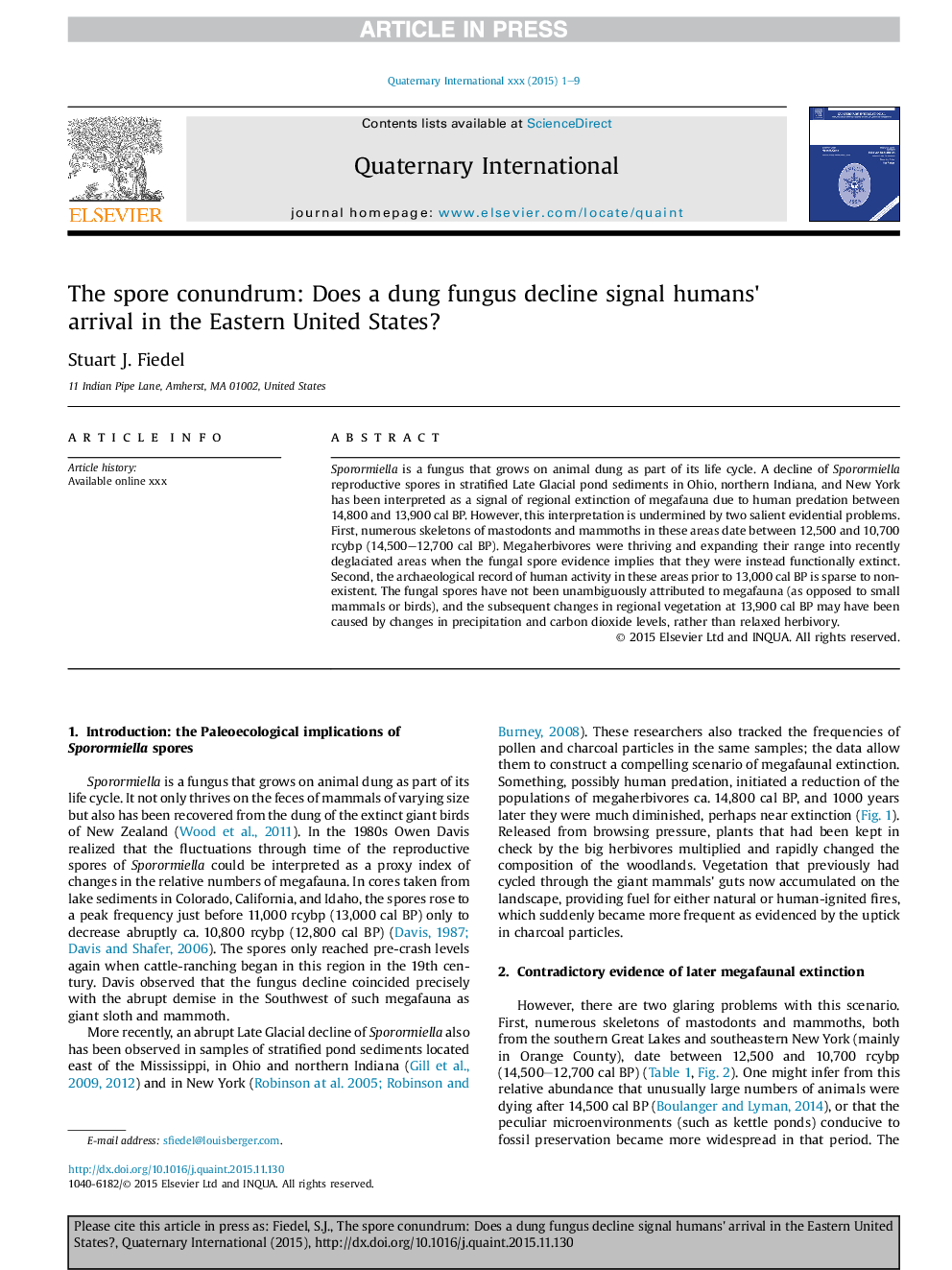| کد مقاله | کد نشریه | سال انتشار | مقاله انگلیسی | نسخه تمام متن |
|---|---|---|---|---|
| 7450645 | 1484053 | 2018 | 9 صفحه PDF | دانلود رایگان |
عنوان انگلیسی مقاله ISI
The spore conundrum: Does a dung fungus decline signal humans' arrival in the Eastern United States?
ترجمه فارسی عنوان
مضرات اسپور: آیا یک قارچ خاکی منجر به ورود انسان ها به ایالات متحده آمریکا می شود؟
دانلود مقاله + سفارش ترجمه
دانلود مقاله ISI انگلیسی
رایگان برای ایرانیان
موضوعات مرتبط
مهندسی و علوم پایه
علوم زمین و سیارات
زمین شناسی
چکیده انگلیسی
Sporormiella is a fungus that grows on animal dung as part of its life cycle. A decline of Sporormiella reproductive spores in stratified Late Glacial pond sediments in Ohio, northern Indiana, and New York has been interpreted as a signal of regional extinction of megafauna due to human predation between 14,800 and 13,900Â cal BP. However, this interpretation is undermined by two salient evidential problems. First, numerous skeletons of mastodonts and mammoths in these areas date between 12,500 and 10,700 rcybp (14,500-12,700Â cal BP). Megaherbivores were thriving and expanding their range into recently deglaciated areas when the fungal spore evidence implies that they were instead functionally extinct. Second, the archaeological record of human activity in these areas prior to 13,000Â cal BP is sparse to non-existent. The fungal spores have not been unambiguously attributed to megafauna (as opposed to small mammals or birds), and the subsequent changes in regional vegetation at 13,900Â cal BP may have been caused by changes in precipitation and carbon dioxide levels, rather than relaxed herbivory.
ناشر
Database: Elsevier - ScienceDirect (ساینس دایرکت)
Journal: Quaternary International - Volume 466, Part B, 18 February 2018, Pages 247-255
Journal: Quaternary International - Volume 466, Part B, 18 February 2018, Pages 247-255
نویسندگان
Stuart J. Fiedel,
